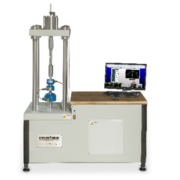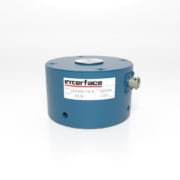Interface Column Load Cells
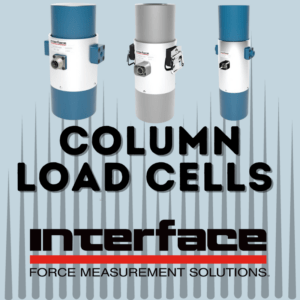 A column load cell is a type of load cell designed with a cylindrical or column-shaped housing. It is typically used in applications where the load or force is applied vertically, and the sensor is installed in a way that the load is directed along the central axis of the column.
A column load cell is a type of load cell designed with a cylindrical or column-shaped housing. It is typically used in applications where the load or force is applied vertically, and the sensor is installed in a way that the load is directed along the central axis of the column.
Interface column load cells are often used for vertical force measurement applications, including weighing scales, silos, structural tests, and thrust testing. Column load cells are rugged, providing a more durable solution for exposure to environmental conditions. Interface column load cells are typical for high-capacity thrust and structural testing.
A column load cell, by design, handles higher axial (vertical) loads while maintaining accuracy and reliability. Column load cells are designed for vertical force measurement. They are more robust, durable, and often larger than a standard canister load cell.
Canister load cells are typically more compact, making them a good choice for applications with limited space and where easy installation is a priority. A LowProfile “pancake style” load cell is compact and flat, with a lower height than column load cells. LowProfiles are the most popular Interface design of a load cell due to their versatility. The choice between using a column load cell, canister style load cell, or LowProfile depends on the specific needs of the application, capacity, environment, and dimensions.
Popular Interface Column Load Cells
Interface Column Load Cells are available in high capacities, in both tension and compression, as well as compression-only options.
2160 HIGH-CAPACITY COLUMN LOAD CELL
The Interface 2160 High Capacity Column Load Cell offers high performance and highly durable design. It is typically used in high-force measurement applications. It has capacities up to one million lbf (4450kN), with custom options to go higher.
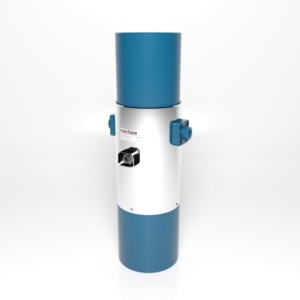 Performance to ±0.15% FS
Performance to ±0.15% FS- Standard capacities of 300K lbf to 1000K lbf (1334 kN to 4448 kN)
- Screw-in Handles
- Tension and compression measurement
- Standardized output
- ASTM E74 calibration
- Special thread size
- Dimensionally compact
- Multiple bridge
SPECIAL NOTE: Why choose a tension and compression column load cell? It’s based on the use case. Weighing of objects that can be subjected to both tension and compression forces, such as aircraft and vehicles. Force measurement in applications where both tension and compression forces are present, such as cable tension testing and load-bearing applications
2161 HIGH-CAPACITY COLUMN COMPRESSION ONLY LOAD CELL
The Interface High Capacity Column Compression-Only Load Cell Model 2161 is applicable for high-capacity compression-only measurement applications. It is available in capacities from 300K to 1000K (1335 to 4450 kN). Options are available for a 2nd bridge.
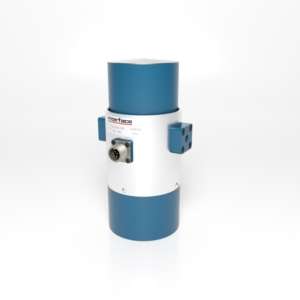 Standard capacities of 300K lbf to 1000K lbf (1334 kN to 4448 kN)
Standard capacities of 300K lbf to 1000K lbf (1334 kN to 4448 kN)- Performance to ±0.15% FS
- Compression-only
- Standardized output
- ASTM E74 calibration
- Handles for easy movement and lifting
- Accessories, including cables and mating connectors
2200 CALIBRATION COLUMN LOAD CELL
The Interface high accuracy 2200 Calibration Column Load Cell is a guided column design. It is lightweight and portable for use in the field. It measures tension and compression. Their high performance and capacity make them excellent for calibrating in aerospace, industrial, and manufacturing labs.
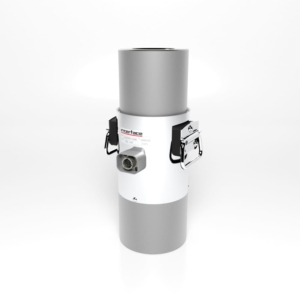 Capacities from 100K – 200K lbf (445kN – 889kN)
Capacities from 100K – 200K lbf (445kN – 889kN)- Performance to <0.10%FS
- Quadruple the gages of the standard column cell
- Lightweight and compact
- Various models, including the 2230 and 2240, are available.
- Compression-only available
- Standardized output
- ASTM E74 calibration
- Special thread size
2300 HIGH CAPACITY FLANGE MOUNT COLUMN LOAD CELL
The Interface High Capacity Flange Mount Column Load Cell 2300 Series is a column design with a flange mount for easy installation. It is available in capacities of 630 kN (140K lbf), 1000 kN (225K lbf), and 2000 kN (450K lbf) and has options available for a 2nd bridge.
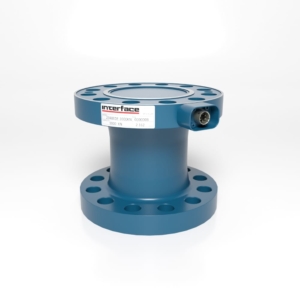 Accuracy class 0.05% FS
Accuracy class 0.05% FS- Tension and compression
- Low profile and low mass
- Fixed cable or plug connection
- Flange mounted
- Easy installation
- Optional redundancy with a dual bridge for axial force measurement
- Option for TEDS calibration IEEE 1451.4
- Models 2330, 2340, and 2350 are available.
Column Load Cell Applications
Column load cells are a viable option for diverse applications across various industries, from rocket tests to construction monitoring equipment. Their ability to accurately measure force and withstand harsh environments makes them a valuable tool for ensuring safety, efficiency, and quality.
Aerospace: In the aerospace industry, column load cells measure the weight of aircraft during loading and unloading, ensuring proper weight distribution and safe flight operations. These rugged load cells are a common feature of thrust test stands.
Infrastructure: Many infrastructure projects rely on column load cells. They are embedded in structures, such as bridges, buildings, and equipment like cranes, to monitor load distribution and prevent overstress or collapse of critical infrastructure. For example, column load cells can test the axial load-bearing capacity of piles, ensuring the stability of foundations and structures.
Machinery and Storage: In agricultural and industrial use cases, column load cells monitor the weight of silos, tanks, and hoppers containing materials. By installing column load cells beneath these containers, you can continuously measure the weight of the contents for storage and process control, allowing operators to track material levels and prevent overfilling or underfilling, which can lead to production issues and safety concerns.
Weighing Systems: Column load cells are commonly used in industrial weighing systems, such as platform scales, floor scales, and truck scales. These load cells are placed under the platform on which the objects or materials are placed for weighing. A logistics warehouse installs column load cells within the floor scales for accurately measuring the weight of pallets or goods. This is valuable data for storage, inventory management, and shipping.
Construction: Material testing and quality control applications use column load cells to measure compressive forces. In a construction material test lab, these load cells can be integrated into testing machines to evaluate the compressive strength of concrete, bricks, or other construction materials.
Energy: Renewable energy use cases for column load cells include measuring the loads exerted on wind turbine towers, ensuring structural integrity, and preventing damage during high winds. Column load cell are also used in field testing for extraction equipment.
Is a column load cell right for your use case? Contact our application engineers to explore your options.


